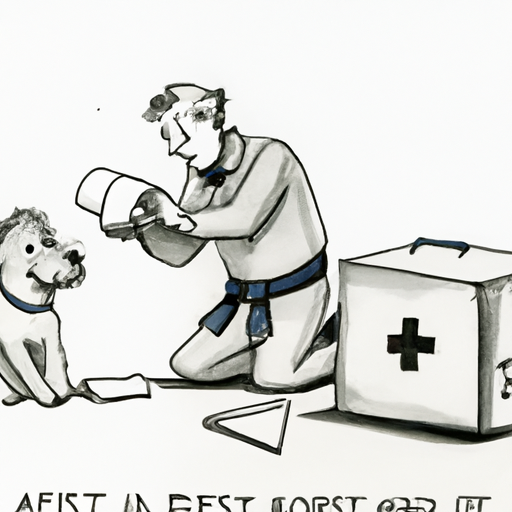As a caregiver, one of your many responsibilities is to ensure the health of your furry friend. A common situation you might encounter is the need to wrap your dog’s ear, either due to injury or surgery. Here’s a step-by-step guide on how you can do it effectively.
Understanding Why You Might Need to Wrap a Dog’s Ear
Wrapping your dog’s ear can be necessary for a variety of reasons.
- Injury: Dogs can get into scrapes and fights, leading to cuts or scratches on their ears.
- Surgery: Post-surgery, an ear might need wrapping to protect the wound from infection.
- Prevent Scratching: To stop the dog from scratching or biting an ear that’s itchy due to allergies or infections.
Understanding the reason for the wrap can help you do it better, as each scenario might require a slightly different approach.
Gathering the Necessary Supplies
Before you start, you’ll need to gather the right supplies. This includes:
- Gauze: This is used to cover the wound and provide a barrier against infection.
- Self-adhesive Bandages: These are used to hold the gauze in place.
- Scissors: To cut the bandages to the right size.
- Gloves: To protect yourself and to prevent further infection of the wound.
| Supplies | Usage |
|---|---|
| Gauze | Cover the wound |
| Self-adhesive Bandages | Secure the gauze |
| Scissors | Cut the bandage |
| Gloves | Personal protection |
The Wrapping Process
Now that you have your supplies, it’s time to start the wrapping process.
- Clean the Wound: If it’s an injury, clean the wound with warm water and a gentle soap. Pat it dry carefully.
- Apply the Gauze: Place the gauze over the wound. Make sure it covers the wound completely.
- Wrap the Bandage: Start wrapping the self-adhesive bandage around the ear. Be sure not to wrap it too tightly- you don’t want to cut off circulation.
- Secure the Bandage: Once you’ve wrapped the bandage around the ear a few times, secure it in place.
Monitoring the Wrapped Ear
After you’ve successfully wrapped the ear, your job isn’t done. You need to monitor the wound to ensure it’s healing properly.
- Check for any signs of infection, such as swelling, redness, or pus.
- Make sure your dog isn’t scratching or biting at the bandage.
- Replace the bandage as advised by your vet.
FAQs
Q: How often should I change the bandage?
A: As a rule of thumb, change the bandage every 3-4 days or sooner if it becomes dirty or wet.
Q: What if my dog won’t let me touch their ear?
A: Try to calm your dog down with treats or a gentle voice. If they’re too agitated, it might be best to seek professional help.
Q: Can I use human bandages?
A: It’s recommended to use self-adhesive bandages designed for pets as they’re less likely to stick to fur.
Remember, your role as a caregiver is to provide the best possible care for your furry friend. When in doubt, always seek the advice of a professional veterinarian.



